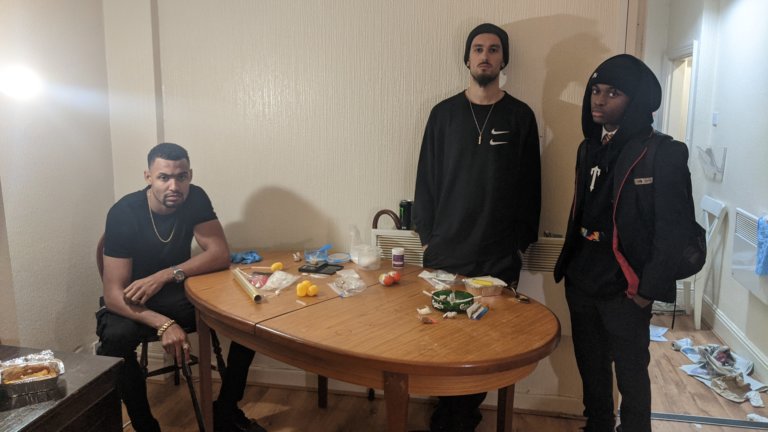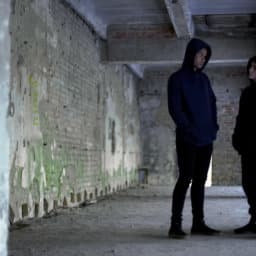Part 1: The Knife Crime “Pandemic”: The Challenges
By Jeffrey Wotherspoon, Leadership Coach at Antser
Jeffrey Wotherspoon is one of our Antser Subject Matter Experts in Gangs, County Lines and Knife Crime and an Executive Coach and Conflict Resolution Specialist. Jeffrey’s background is predominantly focused around youth work, with extensive experience in the criminal justice system. Over the years Jeffrey has worked on the frontline with some of the UK’s most vulnerable young people who were involved with gangs, county lines, and serious youth violence, as well as working with adult high-risk offenders.
Jeffrey currently works within Antser’s Virtual Reality teams using the technology as a new, innovative way to tackle gangs and knife crime successfully among young people and practitioners.
Knife crime in England and Wales has continuously increased since the year 2012. Only in the quarter leading to June 2020 did we see a 1% decrease, however this is not an indication of permanent change, as one would hope, but rather a reflection of the quarter leading to June 2020 – a period of national lockdown and social distancing, showing us that it was actually the Global Pandemic that could have led us to this outcome.
One of the main challenges professionals working with young people face is the rising numbers in knife possession. The alarmingly growing numbers of youth in the possession of knives, in addition to the existing resources being already stretched to contain these numbers, is making it more difficult to protect young people against gangs and violence.
I often come across young people who are involved in gangs and knife crime. When we speak, they confess that one of their biggest challenges is keeping out of harms’ way (should they choose to not carry a knife/sword/sharp object), and being fearful of those who are armed that could harm them if they do not possess a knife to defend themselves. At times, young people can be seen carrying swords: according to them, the bigger their weapon is, the more they are perceived as having the upper hand and therefore deterring their opponent from attacking them.
For parents and carers, the biggest challenge is feeling they cannot keep young people safe. Most parents are usually faced with the news of their children being involved in gangs and knife crime when something bad occurs. At times, they are inclined to believe what their children tell them: I have known parents to categorically deny any claim that their child is indeed involved with a gang, despite police intelligence, only to be stunned to silence in court when they are presented with CCTV evidence of the crime.
One tool that has proven successful in addressing the ever-pressing issue of gangs and knife crime is Virtual Reality (VR) technology. This is a unique tool that we use within Antser to enable the viewer to ‘feel’, through an immersive experience, how being in a ‘trap house’ environment, for example, can affect young people who are often groomed and/or coerced.

Still footage from “The Traphouse”, one of our immersive films.
Apart from getting practitioners incredibly close to a young person’s experience, VR is one of, if not the most effective tool in rapidly enhancing the empathy and understanding of a professional or carer through a ‘lived experience of the young person’.
This first-hand experience moves the user from a theoretical understanding of the issues relating to gangs and knife crime to a ‘real-life’ understanding, which closely mirrors the young person’s environment, fears and emotions.
Many people believe that young people are ‘making a choice’, and in return, those young people believe they do not have a choice. Many of the young people Antser works with, tell us they must carry a knife due to either their current or previous lifestyle, and believe they may be faced with situations where they ‘would have to’ use it, in fear for their lives.
This emotional connection is what helps us establish the rapport between professionals and young people; and ultimately aids best practice on the part of the professional, as well as the trust to open up and receive support on the part of the young person.
In addition, the VR experience provides a great platform for training professionals and carers working with young people in any capacity, around gangs and knife crime. It is a great tool that can be used to reflect and support best practice, as well as pick up on unconscious biases and how they can be challenged to develop appropriate empathy when working with young people.
This is echoed by the feedback we have received from professionals from a variety of fields such as children’s services, education and other public and voluntary sector organisations. Commonly we hear comments such as “We are so happy the VR experiences have been developed”, “It is needed” and “It’s something all professionals working with young people should be exposed to”.
More importantly, they comment on the positive impact that the VR has had on their practice, which is consistent with PWC findings that users of VR are 275% more likely to act on what they learned from the training.
What I would like you to take away from this series of articles, and hope I have facilitated you to see, is that the young person’s perception of the world is different to yours – unless you’ve had similar lived experience or traumatic events. And, if it is different, we can only empathise. The VR experience takes our empathy to another level, and it is this new level of empathy that builds stronger relationships and better practice, which ultimately leads to greater outcomes.
Read Part 2 – The Knife Crime “Pandemic”: The Misconceptions and Solutions here.



